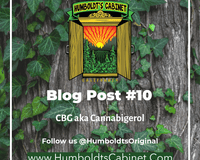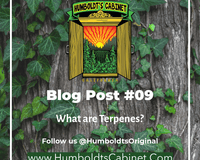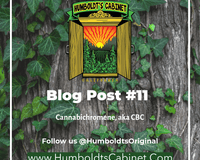Wholesale Hemp: A Worldwide Market
The 2018 Farm Bill was passed by the United States Congress and signed by the president on December 20th of that year. The omnibus legislation was extremely broad in its scope but nestled in the mountain of legalese was language that effectively ended the federal prohibition of the hemp plant.
“Hemp” is now defined as any cannabis plant that expresses less than 0.3% Delta-9 THC and though individual states and/or local municipalities can regulate or even ban hemp production as they see fit, they can no longer blame Uncle Sam for those decisions.
This long-overdue decision by our nation’s lawmakers was rooted in irony considering that both George Washington and Thomas Jefferson themselves grew hemp, and both the U.S. Constitution and the original American flag were crafted with hemp.
So, it stands to reason that from our limited perspective, hemp seems like a uniquely American crop, but the truth is that the rest of the world has had a huge head start on hemp and a multibillion-dollar global marketplace is already underway.
HEMP HERE, HEMP THERE, HEMP EVERYWHERE!
The global industrial hemp market was estimated to be valued at about $5 billion in 2019.
With American farms coming online, along with their branding and marketing, and with the continued rise in popularity of CBD and other non-THC active cannabinoids in markets around the world, industry watchdogs predict that the global industrial hemp market will be valued around $36B by the year 2026.
Of course, hemp is not just grown for CBD production or cannabinoid extraction. The plant is among the most versatile on the planet with everything from its seeds to its stalks and roots offering some form of potential wellness benefit.
The fiber from the plant can be converted into paper products, fabrics, or even hardened lightweight alternatives to plastics.
Hemp is an annual crop when grown outdoors, meaning it is harvested and replanted every year, so being able to use every bit of the plant is a testament to the plant’s regenerative and sustainable characteristics.
Hemp plants also sequester toxins and impurities from the soil itself, without transferring those contaminants to the flowering buds or the wellness products made from them. These plants can actually thrive in barren, over-farmed, or polluted soil and revive it.
All of these points, and more, have made hemp farming an attractive and lucrative agricultural commodity across the globe and you may be surprised at which countries are leading the way.
HEMP IN CHINA
Chinese farmers have been cultivating hemp plants for thousands of years, mostly for seed and fiber production. The plant was eventually prohibited there, as it was here, but China lifted its ban in 2010, much earlier than the U.S.
With a population of over 1.4 billion people, China has a massive marketplace for hemp products right inside its own borders, but it is estimated that the country currently grows roughly half of the global hemp supply.
HEMP IN ROMANIA
Once thought to be the world-leader in commercial hemp production, Romania was a bit too early for the hemp revolution and found their facilities and cultivation practices to be a bit archaic when global demand finally caught up to their vision.
More recently, the nation has bounced back near the top of worldwide hemp production and manufacturing, focusing on seed, fiber, and oil production for things like protein powders, cereals, pet food, and some CBD products.
Hempseeds are still the nation’s most traded product. Their top export market in 2019? Yep, the good ol’ USA.
HEMP IN SOUTH AMERICA
Countries like Colombia and Ecuador have seen huge influxes of investor cash looking to establish high-tech hemp cultivation and extraction/processing facilities near the equator hoping to take advantage of the tropical climate.
The idea is that the plants can be grown in greenhouses there using light deprivation techniques to induce flowering at an accelerated pace allowing for 3-4 harvests each year instead of just one.
The climate has proven to be a double-edged sword, however, with lots of the most popular hemp genetics failing to survive in the unique conditions.
Colombia’s hemp market is mired in over-regulation and Ecuador’s is relatively new but they both allow up to 1.0% THC, rather than the somewhat standard 0.3% cap seen in most other markets, including here in the U.S.
It will be interesting to see how those arbitrary THC caps begin to clash as the global hemp market expands exponentially over the next five years.
HEMP IN EUROPE
Not to be outdone, European countries like France, Germany, and Lithuania have tens of thousands of acres planted with hemp.
CBD and cannabinoid production and marketing is still rather taboo across most of the continent, leaving mostly seed and biomass/fiber production as the main revenue driver. But consumer demand along with peer pressure from more relaxed markets have lawmakers across the EU considering looser laws to unleash the potential of their own hemp markets.
HOME GROWN HEMP
As more farmers around the world plant more hempseeds around the world, the sheer volume of hemp-based products available to consumers is sure to go through the roof.
Demand will continue to rise, but supply will be so high that prices will begin to stabilize as we see in more traditional markets.
As with any product, though, especially one you consume or ingest into your body, the cheapest is typically not the best.
American hemp farmers had some growing pains in 2019 as many rushed to sow fields with what was supposed to be an easy cash crop, only to have literal tons of biomass rot on the stalk, get infested with bugs, or fail to remain compliant with its THC percentage… plus about a thousand other hiccups, headaches, and hurdles that any new industry is bound to face.
Since then, however, many hemp farms located right here in the U.S. have stepped up the quantity and the quality of their crops to meet the demand of a critical market.
Much like with cannabis, appellation and terroir (the exact locale, climate, and conditions in which a plant is grown) matter greatly when it comes to hemp and there are appellations here in America that cannot be rivaled when it comes to producing top-quality hemp plants.
At Humboldt’s Cabinet, our hemp is sourced from the cleanest, most Earth-friendly American hemp farms situated in some of the world’s finest appellations for cannabinoid production.
As always, we recommend that you find a brand that you can trust and when it comes to hemp-related wellness products there has never been a better time than now to buy American!









